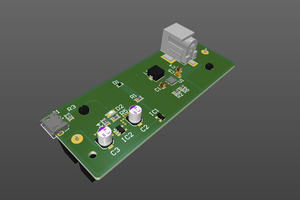Introduction
One of the big problems that exists in the area of creating projects with Microcontrollers, is the power supply of the project. I'm sure you already suffered when there was a power outage in the power grid and the project stopped processing information.
In some microcontrollable designs, for example, security systems, lighting resources and sensor data processing may stop working, and to avoid this problem, a circuit is required to ensure the maintenance of electrical energy.
For this project you'll need the following electronic components:
Bill of Materials
The circuit of the Backup Battery
To avoid this problem, I want to propose a simple circuit and low cost, to ensure electrical power for your electronic projects.

Figure 2 - Schematic to construct the circuit of the backup battery.
As you can see in Figure 1, we have power supplies. The V1 power supply is used to represent the main power source of the electrical circuit. The V2 power supply is our backup battery. Is used to supply electrical power to the LED when the V1 power source is not connected. The LED is used to represent the charge of the circuit, but you can change for anyone other electronic device, for example, presence sensor, security system and others.
Circuit Operation
When the voltage source V1 is connected to the electrical circuit, the diode D1 is directly polarized and the diode D2 is inversely polarized. In this first case, the electric current will flow through the diode D1.
In the second case, as is presented in the Figure 2, when the V1 power supply is disconnected or occur power outage, the diode D1, don't will conduce.

Figure 2 - Operation of Backup Battery on the circuit.
In this moment, the diode D1 begin conducts the electrical current, because it is directly polarized, so the LED continue energized.
When the voltage source V1 is connected again, the D1 diode will conduct again and D2 diode will be inversely polarized.
Acknowledgments
The Silícios Lab thanks PCBWay for its support and work together.
In addition to them, the Silícios Lab thanks UTSOURCE for its support, for offering us the low cost electronic components of great quality and good service.
 Silícios Lab
Silícios Lab
 megahercas6
megahercas6
 mircemk
mircemk
 MAAL's LAB
MAAL's LAB
 Dennis
Dennis